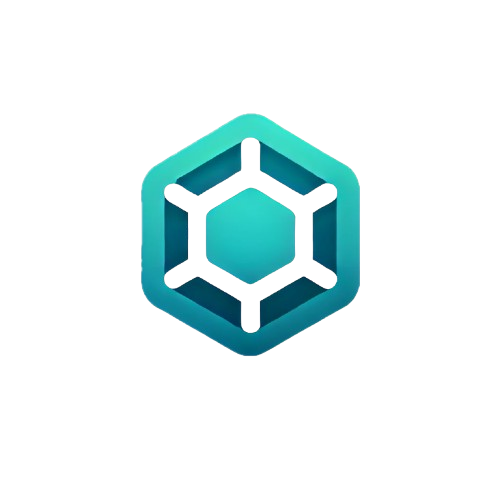· Sweady Team · DevOps & Code Quality · 4 min read
Test-Driven Pull Requests: Improving Code Quality Through GitHub-Slack Integration
Discover how integrating GitHub and Slack can transform your pull request process with test-driven approaches, ensuring high-quality code, efficient reviews, and robust CI/CD communications.
this section is constant and should not be updated author: ‘Sweady Team’ # Gardé l’auteur
Test-Driven Pull Requests: Improving Code Quality Through GitHub-Slack Integration
As software developers, we’re always searching for methods to enhance our code quality and streamline the review process. Test-driven development (TDD) has long been established as a best practice for creating clean, efficient, and reliable code. But have you ever considered applying the principles of TDD to your pull request (PR) process? In this article, we’ll explore how integrating GitHub with Slack can revolutionize the way your team handles pull requests, leading to improved code quality and increased productivity.
The Evolution of Code Reviews
Code reviews are a staple of modern software development. They enable teams to maintain high-quality codebases, share knowledge, and foster mentorship. Traditionally, code reviews were conducted over email or directly within platforms like GitHub. However, as teams become more remote and collaboration becomes paramount, there’s a need for more integrated, real-time methods of communication. Enter Slack.
Why Slack?
Slack has transformed team communication, offering a centralized place for discussions, file sharing, and integrations with other tools. When paired with GitHub, Slack can provide a powerful, real-time environment for code review.
Benefits of Slack Integration:
- Real-time updates: Notifications about pull requests, comments, and CI/CD results are instantaneous.
- Focused conversations: Dedicated channels for each PR prevent clutter and keep discussions on topic.
- Transparency: Team members can see the lifecycle of a pull request from initial submission to review, testing, and merging.
Integrating GitHub and Slack: A Game-Changer
With platforms like Sweady or by leveraging open protocols such as MCP (Model Context Protocol), integrating GitHub and Slack has never been easier[2][5]. The goal is to leverage Slack’s communicative power to ensure pull requests are handled efficiently and effectively.
Features of GitHub-Slack Integration
Here’s how a well-set-up integration can work:
- Automated Channel Creation: Every time a pull request is created in supported systems using tools like MCP servers or custom bots[2], a corresponding Slack channel is automatically generated. This focused space enhances collaboration by isolating discussions relevant to that PR.
- Daily Reminders: Slack bots can send daily reminders about pending reviews—ensuring that no PR languishes unreviewed.
- CI/CD Notifications: Real-time updates on the status of continuous integration (CI) processes or deployment pipelines can be pushed directly into the PR’s dedicated channel[1].
Code Snippet Example
Below is an example of a simple integration script you could use to connect GitHub and Slack using webhooks—enhancing your team’s workflow:
# Example shell command to set up a webhook
curl -X POST \
-H "Content-Type: application/json" \
-d '{
"name": "web",
"active": true,
"events": ["pull_request"],
"config": {
"url": "https://yourdomain.com/github-webhook",
"content_type": "json"
}
}' \
https://api.github.com/repos/:owner/:repo/hooksReplace :owner and :repo with your GitHub organization/repository names; configure the URL endpoint according to your integration setup.
Implementing Test-Driven Pull Requests
Now let’s dive into how you can apply test-driven principles specifically in handling pull requests—the fundamental idea being treating each PR itself as subject-to-testing while using integrated feedback loops via tools like Slack channels[3][5].
Step-by-Step Guide
- Define Expectations & Tests
- Before any code is written—clearly outline what success looks like for this PR (criteria/specs).
- Use dedicated discussion spaces in chat apps such as Slack channels tied directly via integrations[3].
- Draft Pull Request
- Create draft PRs early—even if incomplete—to serve as checkpoints; share them immediately in their respective discussion threads/channels.
- Iterative Development
- Commit small increments frequently; automated tests should run on every push/commit through CI pipelines connected via webhooks/integrations[4].
- Failing tests trigger immediate notifications so issues are caught early—not after lengthy delays.
- Continuous Discussion
- Encourage ongoing feedback within each channel/thread; use reactions/threaded replies so suggestions remain organized/actionable.
- Final Review & Merge
- Once all checks pass & feedback incorporated—conduct final sign-off before merging changes back into mainline branches.
Ensuring Success with Best Practices
To make full use out of these integrations:
- Standardize communication guidelines around giving/receiving feedback constructively;
- Automate repetitive tasks wherever possible using available DevOps tooling/platforms;
- Foster growth mindsets where learning from peer-review remains central—not just passing/failing builds/tests;
Conclusion
By integrating platforms such as GitHub with chat-based environments like Slack—and adopting test-driven approaches even at the level of reviewing/merging changes—you’ll boost both collaboration speed and overall product quality[1][3]. These practices help remote/hybrid teams stay aligned while reducing bottlenecks common in traditional workflows.
Try Sweady Today!
If you’re looking for an easier way to integrate these workflows—including automated reminders/status checks—explore solutions such as Sweady or open-source alternatives supporting Model Context Protocol servers tailored toward DevOps automation[2][5].
For more insights into optimizing your development process stay tuned here—for practical guides/tips on DevOps best practices & remote team management! To take your integration skills even further and boost your team’s remote collaboration efficiency, check out our insightful guide on GitHub and Slack Integration for Modern Teams. This post dives deeper into how these powerful tools can elevate your team’s workflow and keep everyone connected, no matter where they are. Give it a read to start making the most of these integrations today!
 Sweady
Sweady